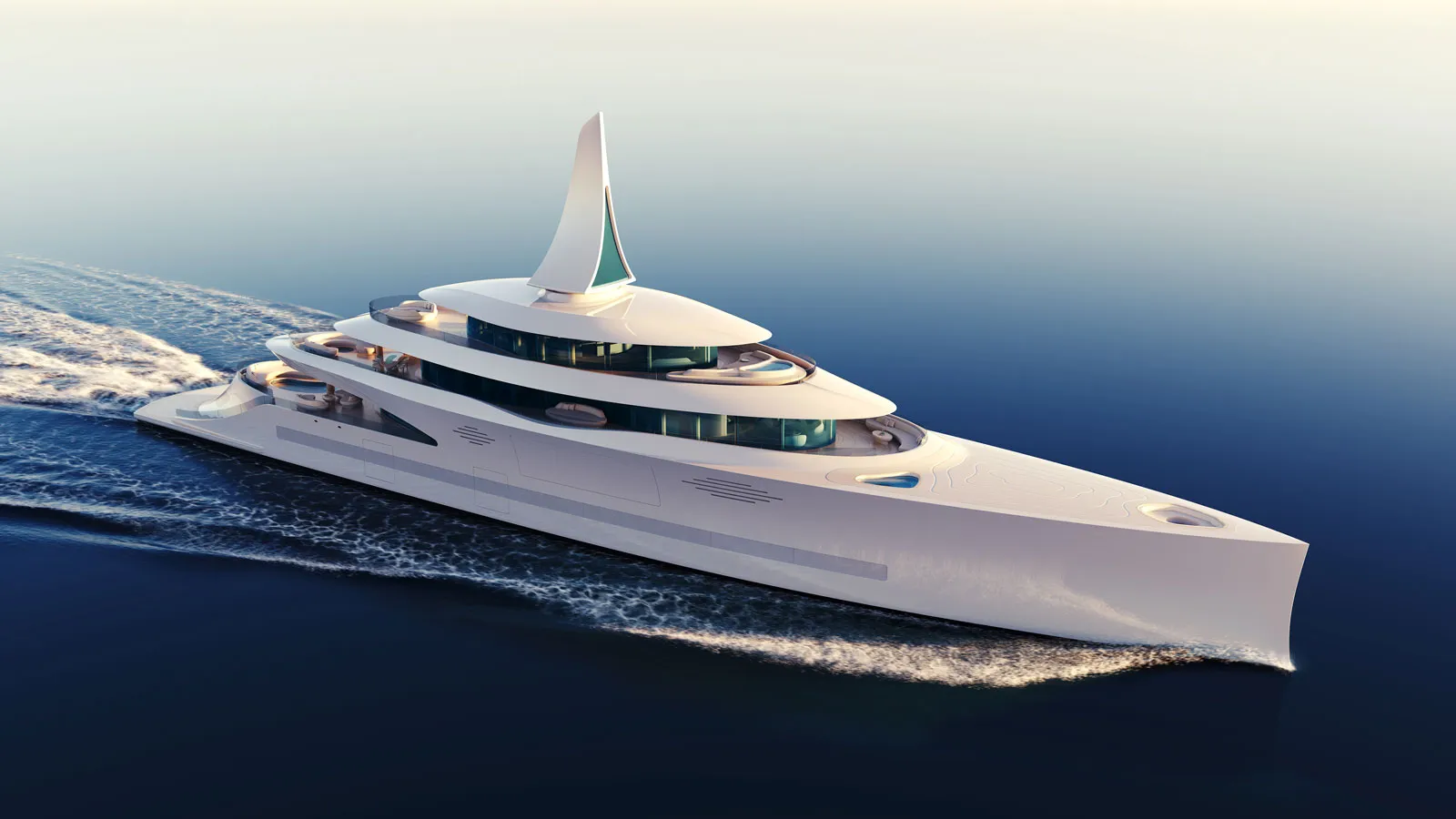
The 83-meter Feadship eco-concept Dunes, which debuted at the Monaco Yacht Show, has been called a “big leap” toward the shipyard’s objective of “net zero superyachts.”
If Dunes is as effective as YETI claims, it will “eliminate up to 95 percent of the potential negative environmental factors associated with operating a superyacht” compared to a boat meeting today’s basic environmental requirements. Steel and aluminum with a “low impact” and “high scrap content” will be used to build Dunes, which will also have other environmentally friendly characteristics including a unique cooling mast, large capacity batteries, a novel fuel cell design, and an innovative propulsor.
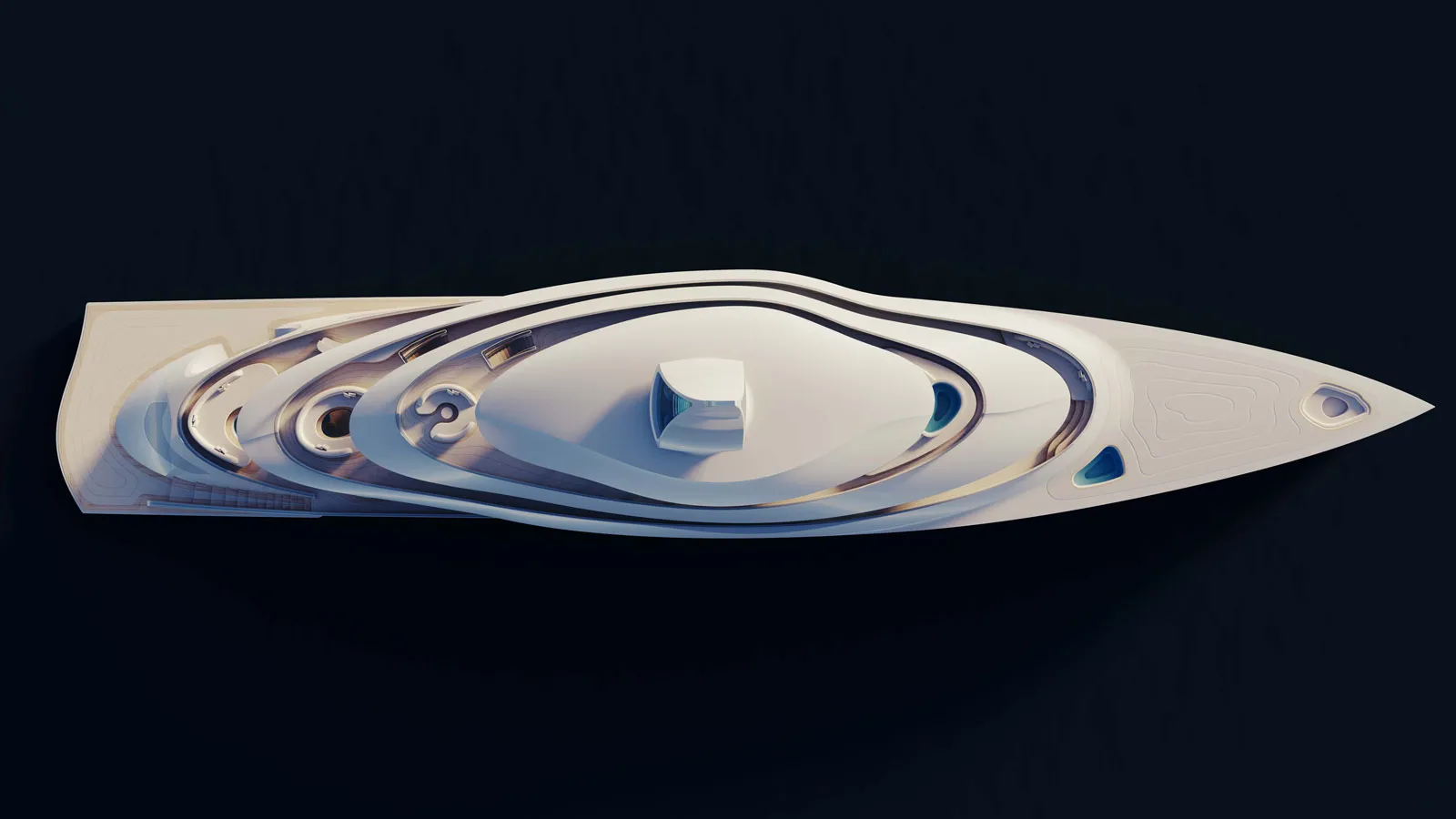
Studio De Voogt designed Dunes with a distinctive aesthetic to evoke “undulating waves, not of water, but of sand.” As a result of the body’s inconsistency and the superstructure’s asymmetry and lack of straight lines, it seems to “shift with light and shadow.” Improvements over the previous Feadship designs, Breathe (2010) and Pure (2021), may be seen in the design’s reworked ventilation system and moved bridge.
Protected from the weather, with many circulation channels and ample outdoor seating, the Dunes’ massive, covered walk-around decks are a key feature. Outdoor seating areas were envisioned by Studio de Voogt to serve “as islands on the decks,” inspiring the use of golden maple wood, a sustainable alternative to teak. Full-height glass windows and doors, as well as the stairwells, are rounded or gently curved to lower heat loads by “60%” owing to a curving overhang supported by a maple-clad column. All decking has been converted from teak to a composite of millions of tiny glass and stone shards encased in an aliphatic polyurethane resin.
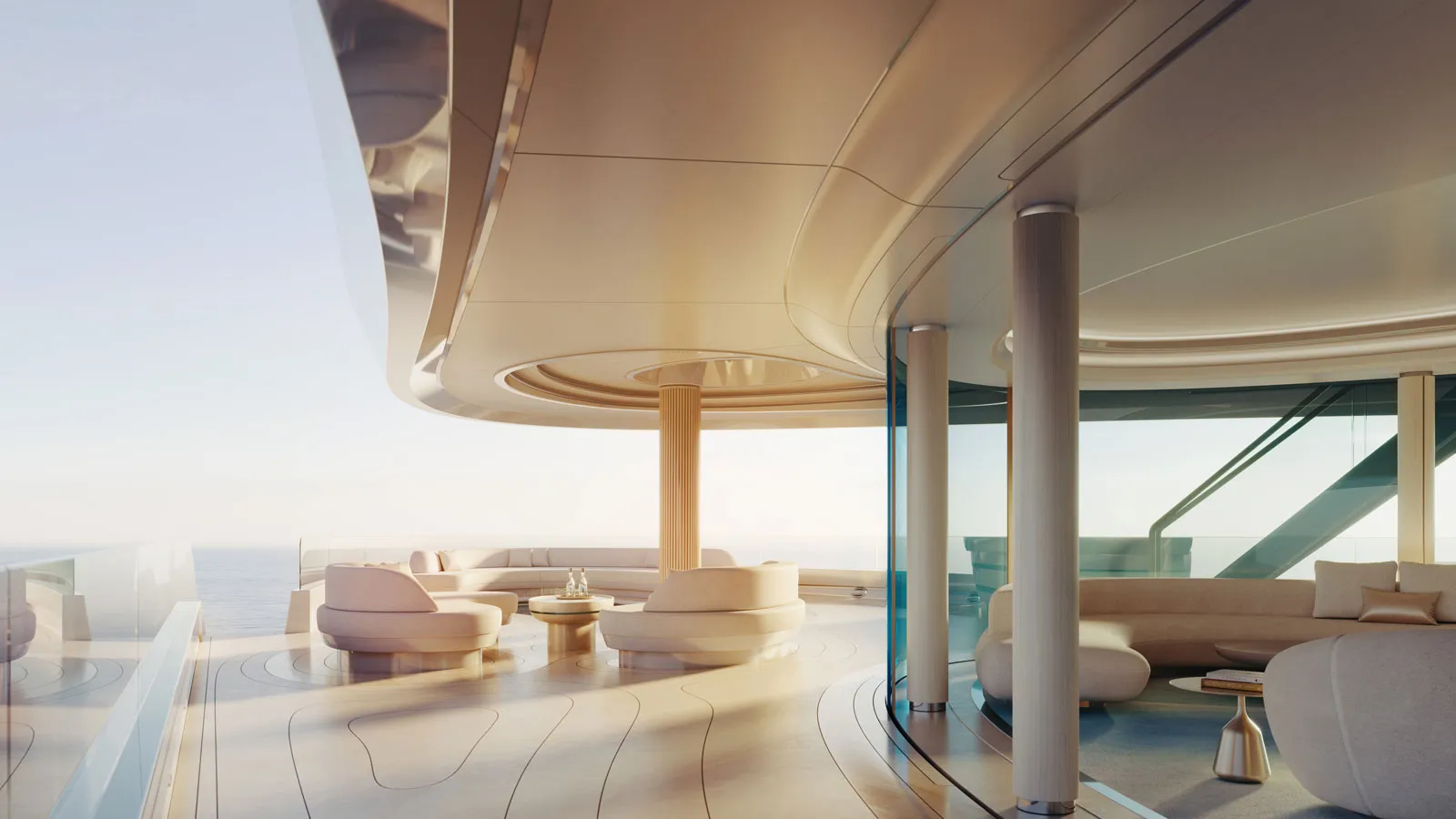
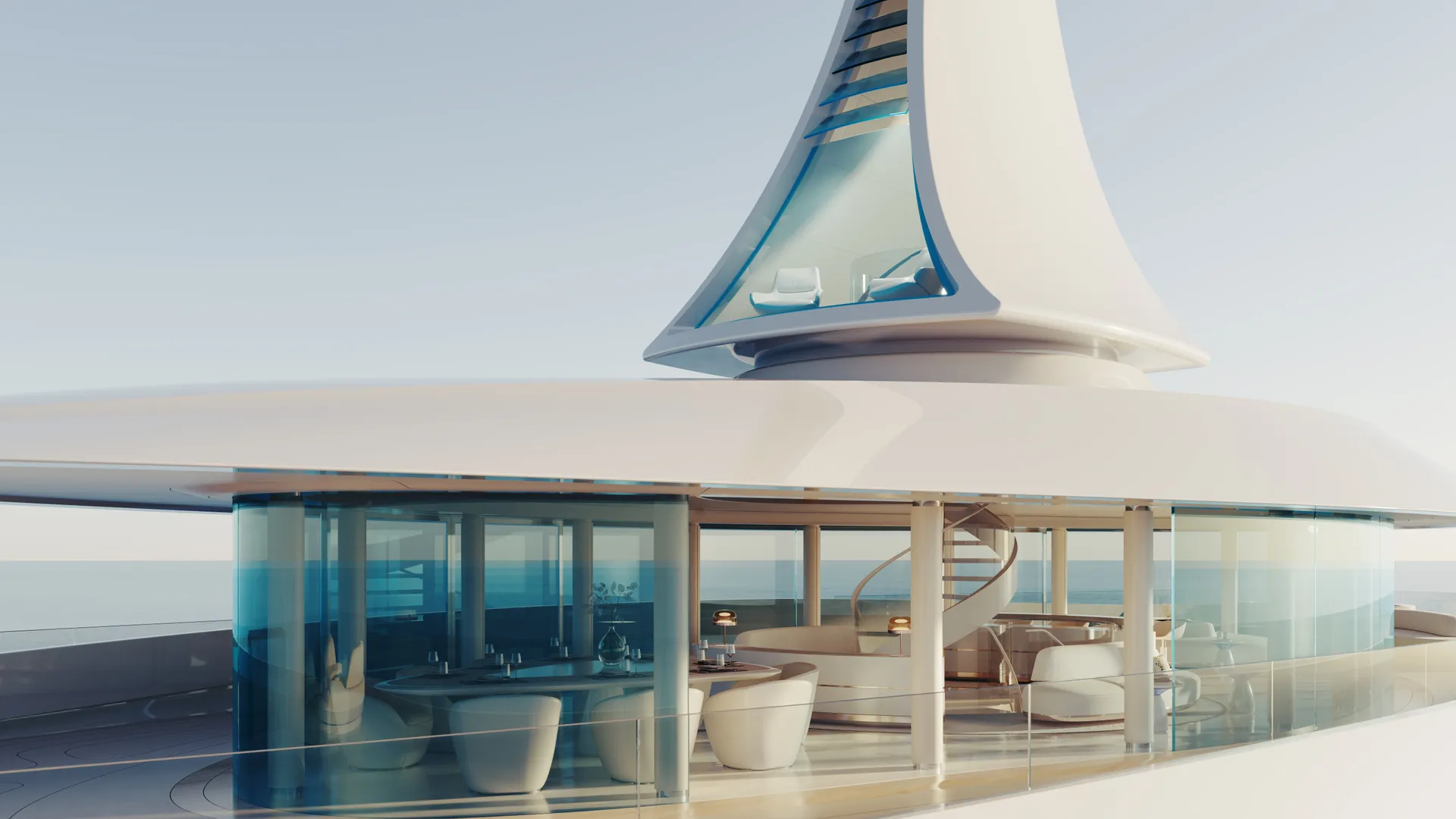
Notably, the “CO2-negative” treated wood used for the pavilion’s top deck construction provides excellent natural insulation without adding unnecessary bulk. There includes a Jacuzzi and a casual dining space on the upper deck, which can be transformed into “any number of purposes, from night club to conference room.”
Studio de Voogt’s “Cool Core Concept” has a distinctive 10-meter mast, which may be accessed via circular steps from this space. Without using fans or ducts, the mast’s triangular convex and concave foils carry air up the ship’s central stairway. Feadship claims that by following this “simple physics,” annual HVAC energy consumption may be cut by 35%. When utilized just at anchor, the mast’s modest, two-blade vane for sun and wind power may generate roughly 25 MWh per year.
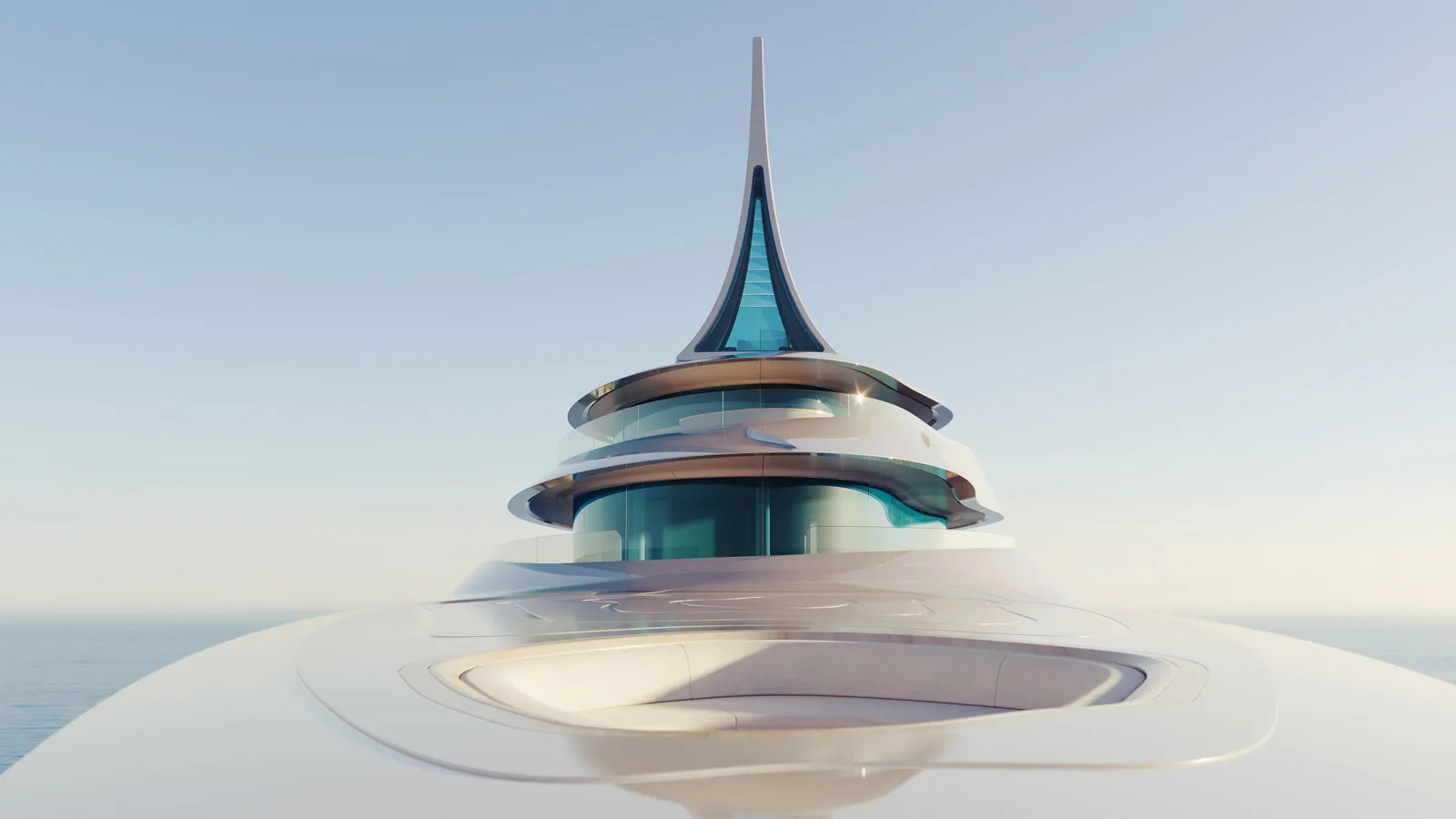
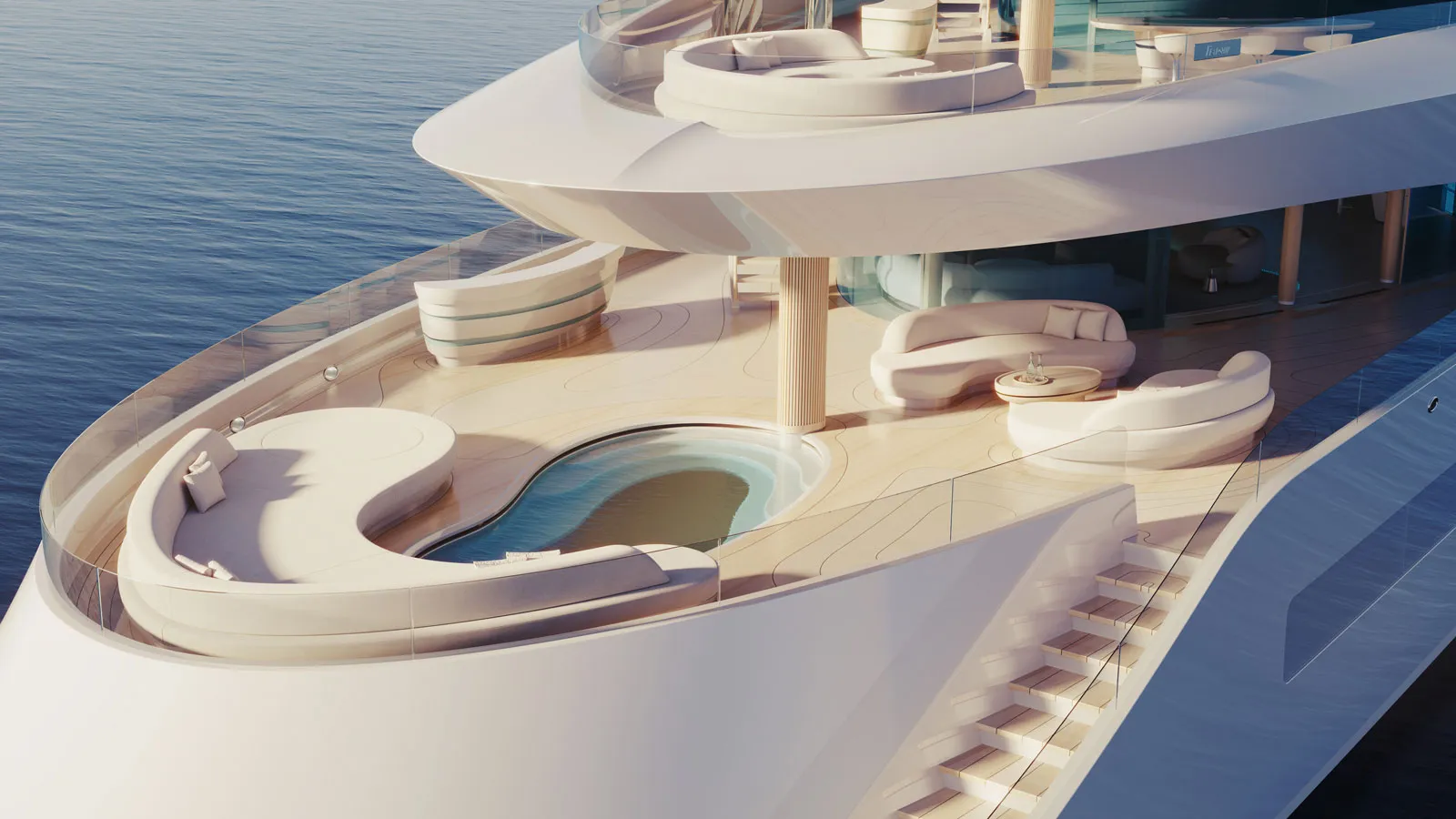
Dunes will be powered by ABB’s high-efficiency electric propulsion system, the ABB Dynafin, however specifications have not been disclosed.
After 10 years of development (and its premiere in May of this year), the Dynafin employs rotating vertical blades to mimic the thrust of a whale’s tail, which is hailed as “one of the most efficient forms of thrust ever seen.” The “green methanol” employed as a reaction agent in the system’s solid oxide fuel cells is chosen for its high energy density and ease of storage. In 2025, we hope to see the first Dynafin prototype in action.
BOAT Pro reports that Feadship is busy constructing 15 boats at the moment. Recently, the shipyard’s Van Lent facility on Kaag Island started the mysterious Project 822.